Located along the Potato Creek north of Smethport in McKean County, Pennsylvania, the Keating site (36MC0127) is a prehistoric site with a long history of occupation covering a period of time from approximately 7000 B.C. to A.D. 1500. The site is eligible for listing in the National Register of Historic Places important because of its potential to provide more information about how people lived in this area during the Early Archaic to Late Woodland. This post, the first of two, explores some of the more interesting findings from this dig.
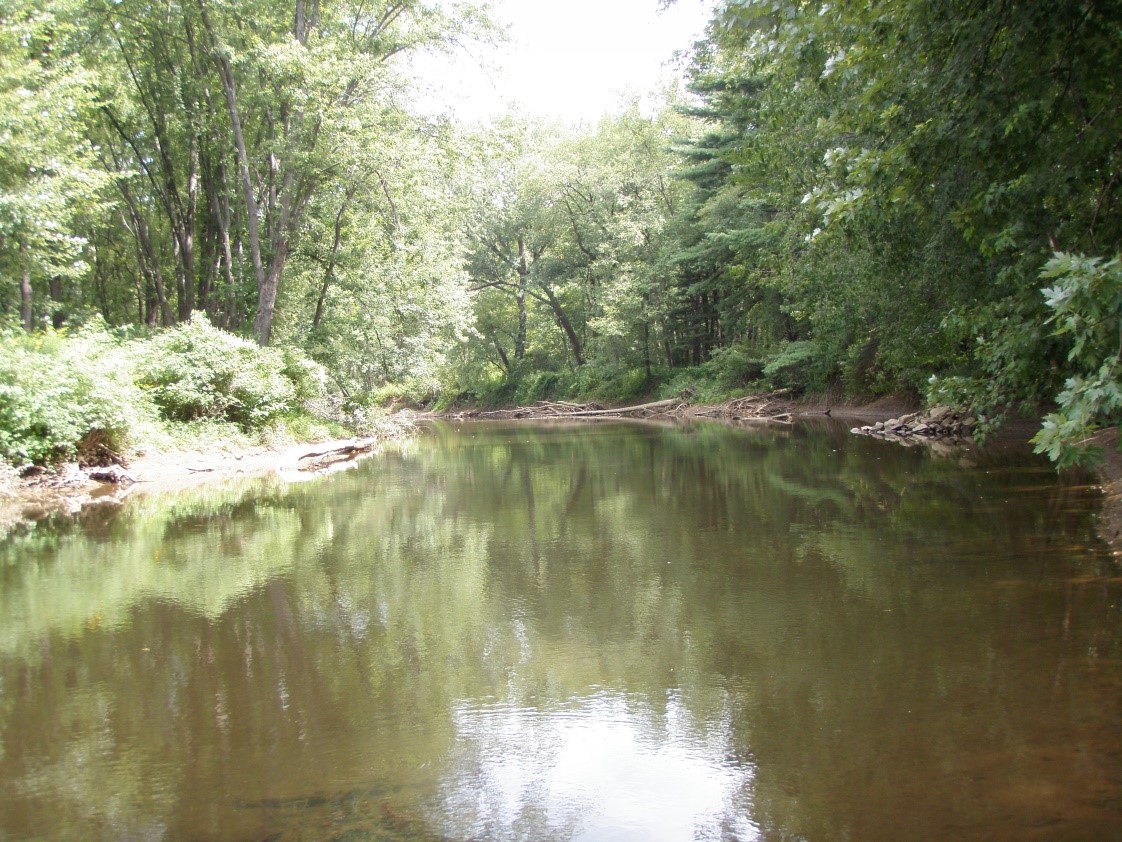
Potato Creek (or Cononodaw) as viewed in its current course just south of the Keating Site. Credit: Allegheny Archaeology Research, August 2015.
The Keating site (36MC0127) is the proposed location for a new wastewater treatment facility that, when constructed, would remove most of the known site area. Because the proposed project would have an adverse effect of this National Register-eligible archaeological site, federal and state agencies consulted with the PA SHPO under Section 106 of the National Historic Preservation Act and developed a mitigation plan, which involved Phase III investigations and public education (which we’ll cover in Part 2!). Mitigation involves compensation for the loss (or diminishment) of a historic property. Essentially, mitigation is an attempt to provide a public benefit that balances the loss of the historic property.
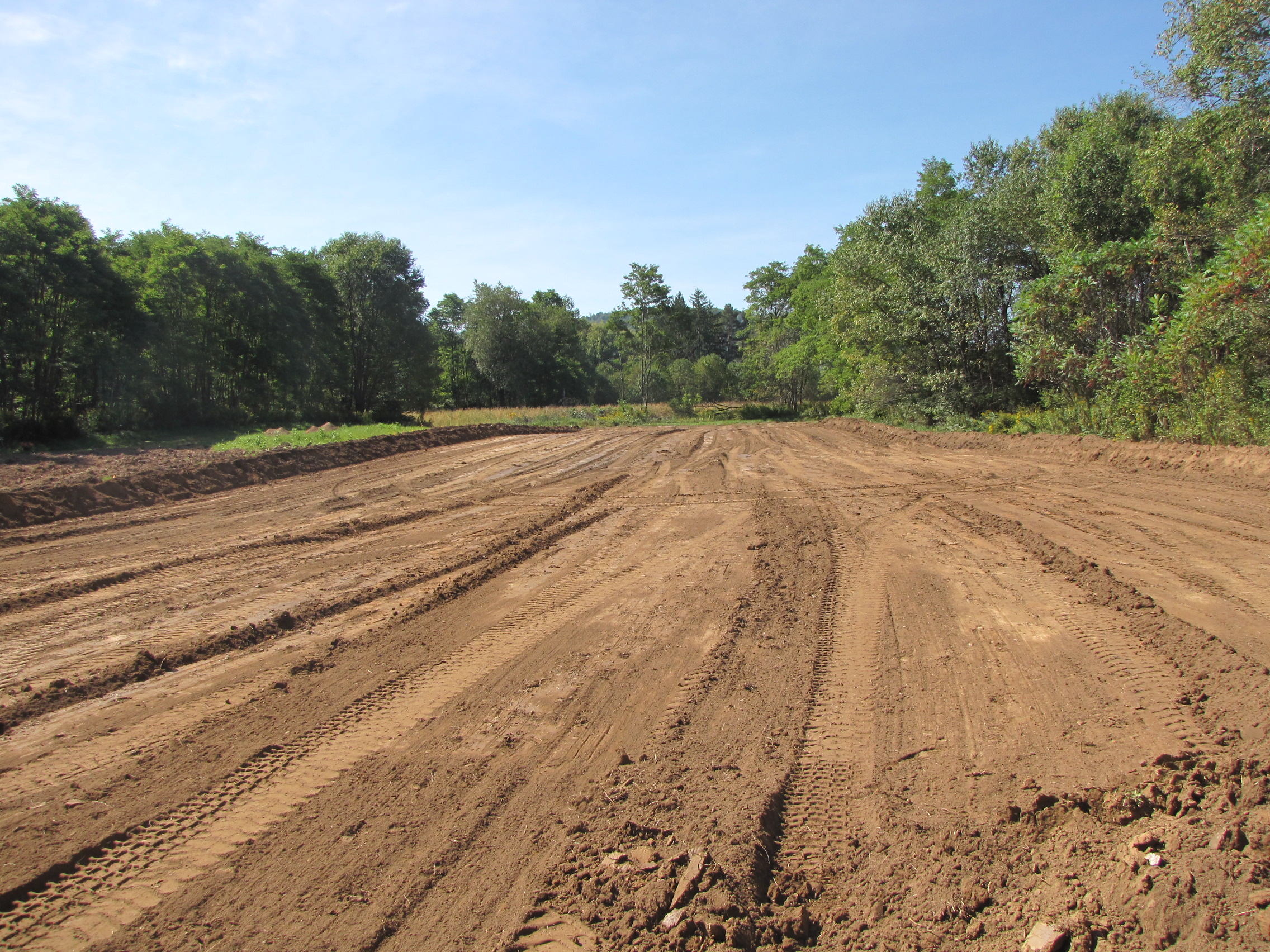
A variety of data recovery methods were used at the Keating Site. In order to maximize artifact recovery, much of the site was plowed and disked prior to stripping. The surface survey produced hundreds of artifacts including points, drills, ground stone and flake stone tools, pitted stones, pestles, and prehistoric ceramics. Credit: Allegheny Archaeology Research, September 2015.
Allegheny Archaeological Research (AAR) began work on the Phase III investigation during the summer of 2015. Fieldwork included excavating test units, surface survey, and removal of the plow zone to search for cultural features. Investigations resulted in the identification of 21 features, the majority of them hearths, being found throughout the site. Features at this site are very important as they provide the best context for, and preservation of, archaeological information.
One of the most interesting features that we investigated was Feature 1 in an area designated as Test Area 3, which was situated on a slight rise in the topography of the site near a small creek. Feature 1 was a cylindrical shaped feature containing a large quality of charred material. Excavation and soil samples from the feature identified a small amount of black walnut (Juglans nigra) nut shell. One standard radiocarbon date was obtained that returned a conventional radiocarbon age of 4440 +/-30 BP.
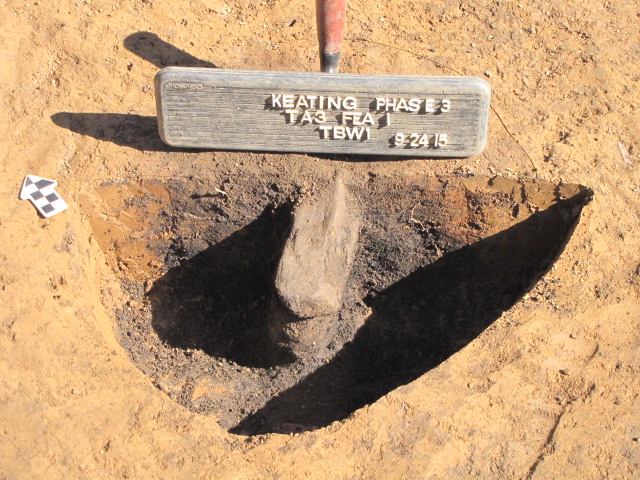
Feature 1 found in Test Area III contained a pestle and a cup stone (or “nutting stone”) found undisturbed for thousands of years. These artifacts, together with analyses of the soils that were retained from the feature, seem to confirm that nut processing activities took place at the site. Credit: Allegheny Archaeology Research, September 2015.
The excavation of this feature taught us that Native inhabitants had repeatedly occupied that portion of the Keating site during Archaic times at around 4400 BP and were involved in some type of nut processing activity involving black walnut during the autumn of the year. Plant material identified by the archaeobotanical study allows us to speculate that the feature may have contained a lining or other structural element within the pit and could possibly have been used to store walnuts after removal from the shell.
Nut processing was apparently a very important activity for Native occupants of the Keating Site. This is evidenced by the numerous pitted stones that were recovered from the site area. Many of these appear to be classic nutting stones with multiple pits on each stone. Currently hickory trees are found in abundance on site. We made the observation that the hickory nuts fit perfectly into many of the pitted stones suggesting that Native inhabitants occupying the site may have been gathering and processing not only black walnut, but other available nut types as well.
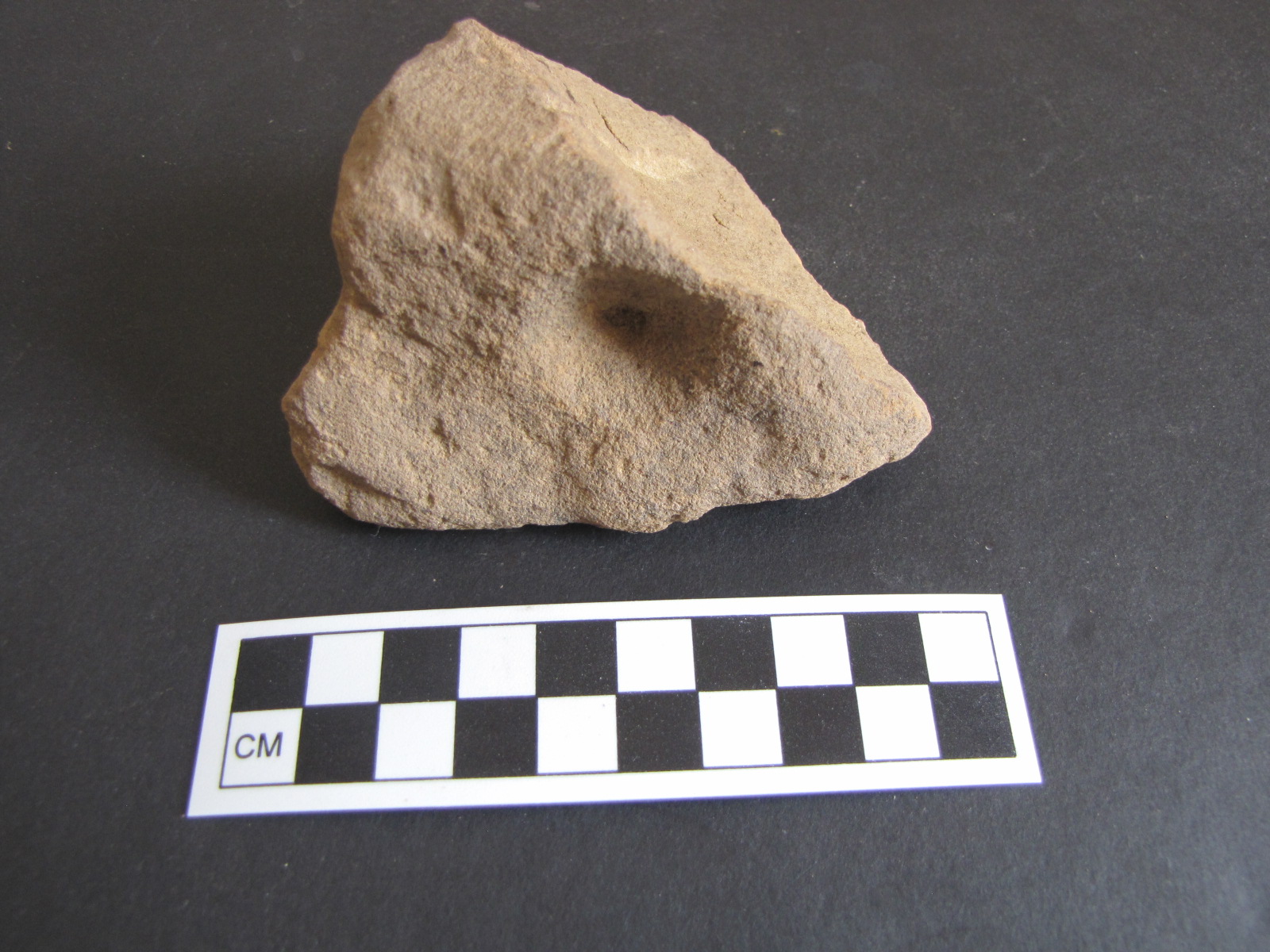
Discovery of pitted stones was a fairly common occurrence during field studies. They were found throughout the site, but seemed to occur in the greatest concentration in the northwest section of the site. This was also the area where the majority of the site’s features were found. Credit: Allegheny Archaeology Research, August 2015.
Another prominent feature found in the southern end of the site revealed a number of chipped and ground stone tools including scrapers, modified flakes, tool preforms, and one pitted stone. This feature likely served as a roasting platform for cooking and food processing purposes.
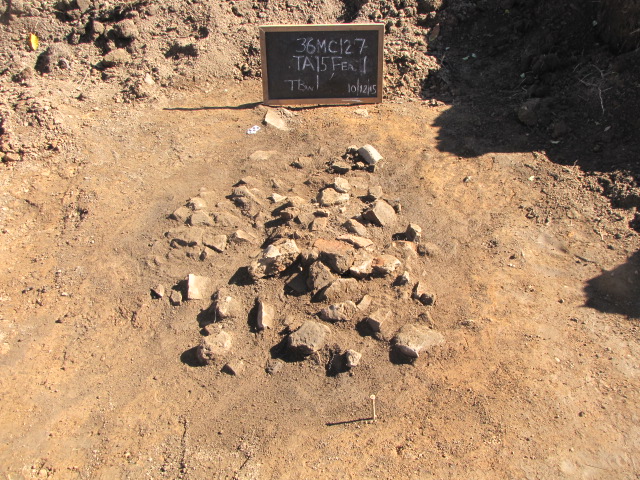
Feature 1 in Test area XV was first noted as a large clustering of fire cracked rock (FCR) following removal of the plow zone soils. The FCR removed from the feature weighed approximately 116.5 pounds (52.84 kg). Non-diagnostic lithic tools were also recovered. Credit: Allegheny Archaeology Research, October 2015.
A number of cultural components are recognized for the site. Point types recovered include Archaic and Early and Middle Woodland forms. This includes an Early Woodland Forest Notched point was recovered, a possible Early Archaic MacCorkle type, a Middle Archaic Otter Creek and Middle Woodland Raccoon Notched point. Others are various Archaic forms including Normanskill, possible Genesee, Brewerton, Otter Creek-like, and Lamoka. The wide variety of different projectile point styles recovered from this site suggest a long period of repeated visits by site occupants over time.
The Phase III study of the Keating Site has demonstrated the significance of the site and most importantly has created an archaeological record from the site to support research by future generations. This research into how the Native populations used the northern tier of Pennsylvania and its resources prehistorically is an important step toward filling in our knowledge for an area where little information is available regarding the regions earliest inhabitants.
Stay tuned for more information on the Keating Site and what we discovered through our investigations in an upcoming blog!
This week’s post is by guest contributor Andrew J. Myers, MA as Principal Investigator/President of Allegheny Archaeology Research.
So thankful this was studied before destruction. Would really appreciate being able to follow all archeological studies in western Pennsylvania.
Destruction?…. Since when was achieving the act of removing the daily
amount of thousands of gallons of raw sewage directly from the waters of Potato Creek an act of Destruction!….
PLEASE! Use due diligence before forming such misleading and blatantly false and wrong headed opinions … Sincerely James Duffy ….
Very interesting!
I am working (as an amateur) on the history of the PA Wilds, especially the area centered by Smethport. We’v a long family history in the area, on both sides, and I am soon to be retiring there. My hope is to flesh out the history of the area for my descendants, and maybe generate some ideas for increasing revenue to the borough through tourism or other means.